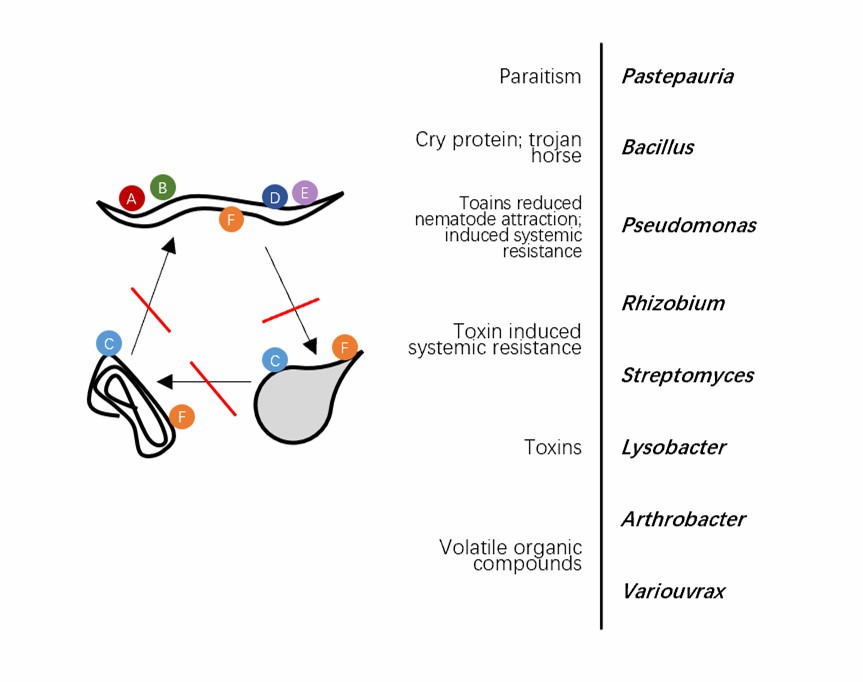Microorganisms in the inter-rhizosphere are not only huge in number but also very rich in species, including fungi, bacteria, algae, protozoa, actinomycetes, etc. These organisms and the inter-rhizosphere constitute a special micro-ecosystem. Plant rhizo-microorganisms are a group of microorganisms that colonize the root system and promote plant growth, with a wide variety of species, including fungi, bacteria, and other microorganisms. They can secrete various active substances, including phytohormones, vitamins, amino acids, etc. They can produce antibiotics, extracellular lysozyme, cyanide, iron carriers, etc., thus alleviating and reducing the occurrence of many crop diseases.
Powered by our professional scientists and their years of field experience, Lifeasible provides analysis services of active substances secreted by rhizo-microorganisms to kill nematodes. With our cutting-edge platforms, we can achieve detailed and effective analysis of enzymes, secondary metabolites, and others.
 Fig.1 Toxins of rhizosphere microorganisms with nematocidal effects.
Fig.1 Toxins of rhizosphere microorganisms with nematocidal effects.
Lifeasible offers the analysis services of active substances produced by rhizo-microorganisms for your research convenience. We aim to help our clients achieve meaningful results through powerful and consistent approaches. If you are interested in our services or have any questions, please feel free to contact us or make an online inquiry.
Lifeasible has established a one-stop service platform for plants. In addition to obtaining customized solutions for plant genetic engineering, customers can also conduct follow-up analysis and research on plants through our analysis platform. The analytical services we provide include but are not limited to the following:
STU-CRISPR System Improves Plant Genome Editing Efficiency
April 19, 2024
Application of Exosomes in Facial Beauty
April 12, 2024